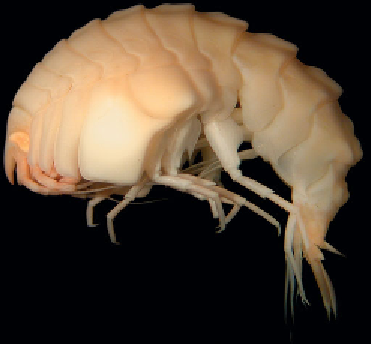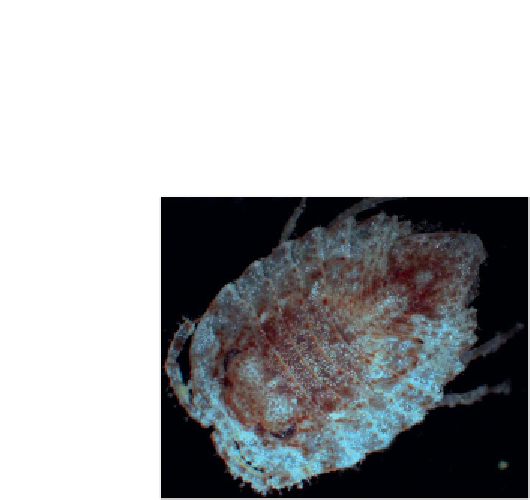Geoscience Reference
In-Depth Information
(a)
(b)
Figure 6.16
(a) The amphipod
Epimeria angelikae
Lörz & Linse 2011. (Credit: Anne-Nina Lörz
& Katrin Linse); (b) A species of isopod
Frontoserolis
(Serolidae). (Credit: Wiebke Brökeland)
done using fatty-acid patterns of peracarid crustaceans as well as stable
isotope ratios have revealed that some species feed on a wide variety of different
food items, especially foraminiferans, a potential reason why some taxa of
Isopoda or Amphipoda might be so successful in the Southern Ocean and have
diversi
ed.
Recruitment and dispersal
Most marine invertebrates disperse by means of a planktotrophic (feeding in the
water column from an early stage of development) or lecithotrophic (early
development depends on egg yolk stores) larva. The accepted paradigm is that
the former permits wider dispersal, although this has been challenged as at least
some lecithotrophic larvae have potentially longer larval life in the plankton than
planktotrophic species. Any such dispersal adaptations would be bene
cial for
dispersal in the generally nutrient-poor deep sea, but little is known of reproduction
in these deep-sea species when compared to the world ocean.
Antarctic shallow water environments are amongst the most disturbed in the
world through ice action, and are characterised by a high proportion of species with
protected and pelagic lecithotrophic development
such an environment obviously
favours organisms with high dispersal capabilities. In addition there is a
predominance of broadcasters (e.g.
Sterechinus neumayeri
and
Odonaster validus
)
at locations where disturbance is common, while brooders (e.g.
Abatus agassizii
)
only occur at shallower depths in the least disturbed locations.
-




Search WWH ::

Custom Search